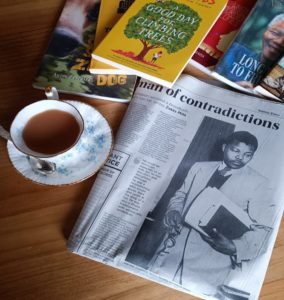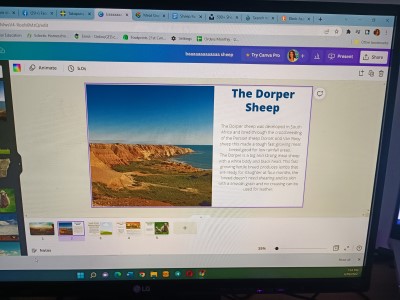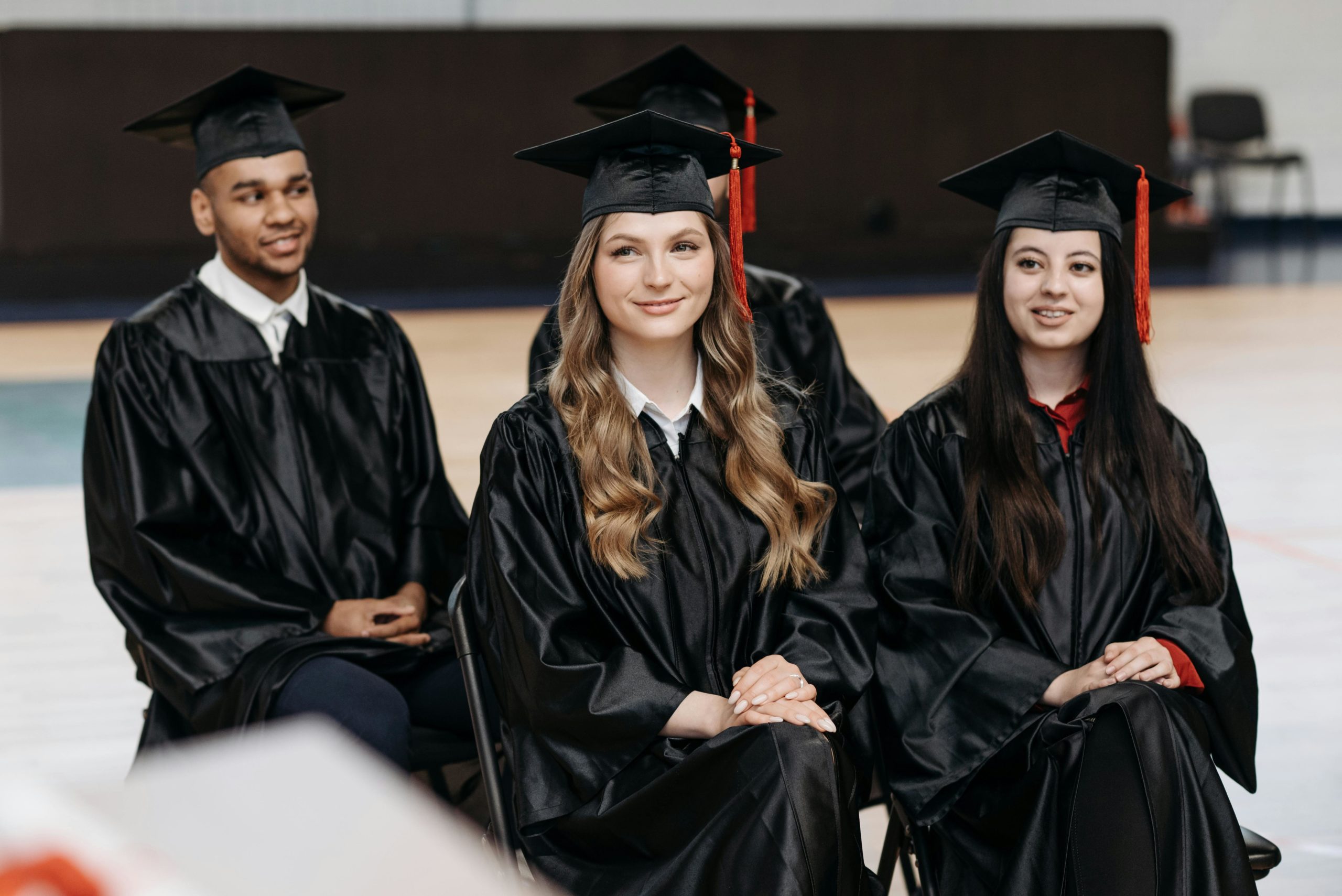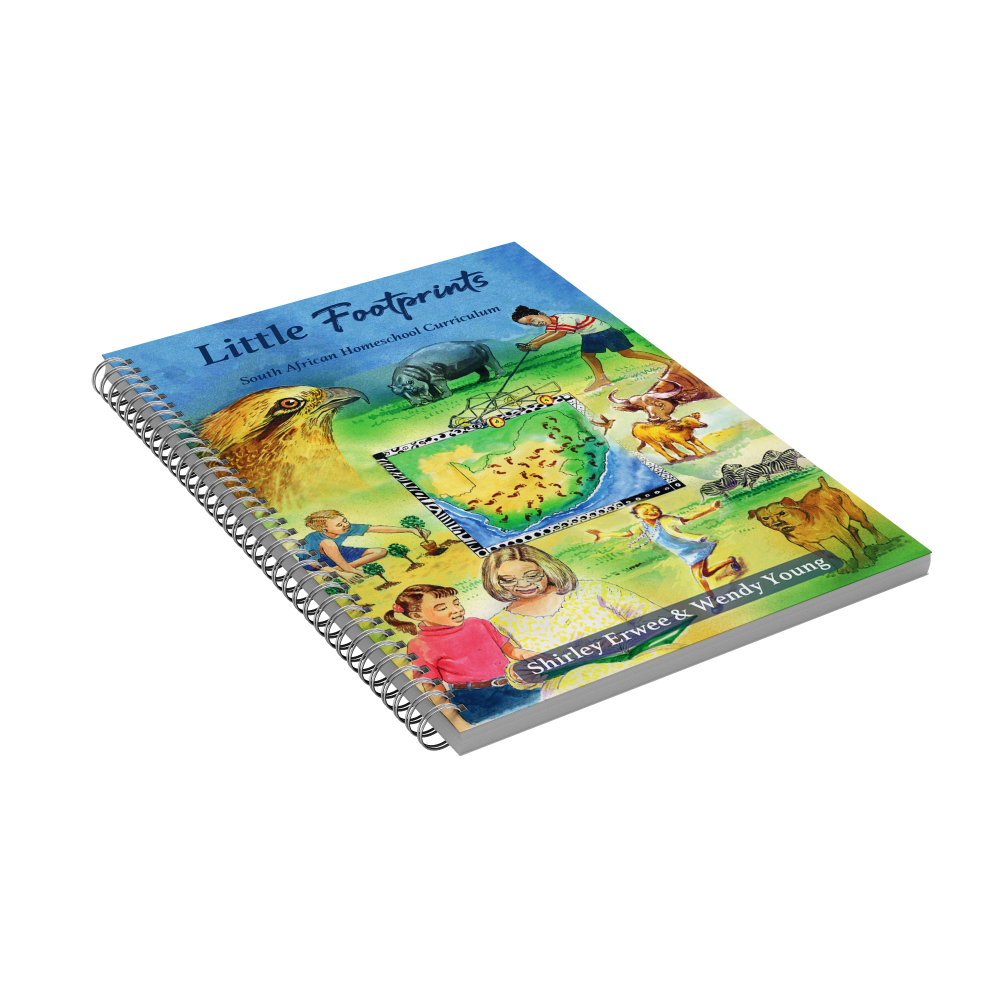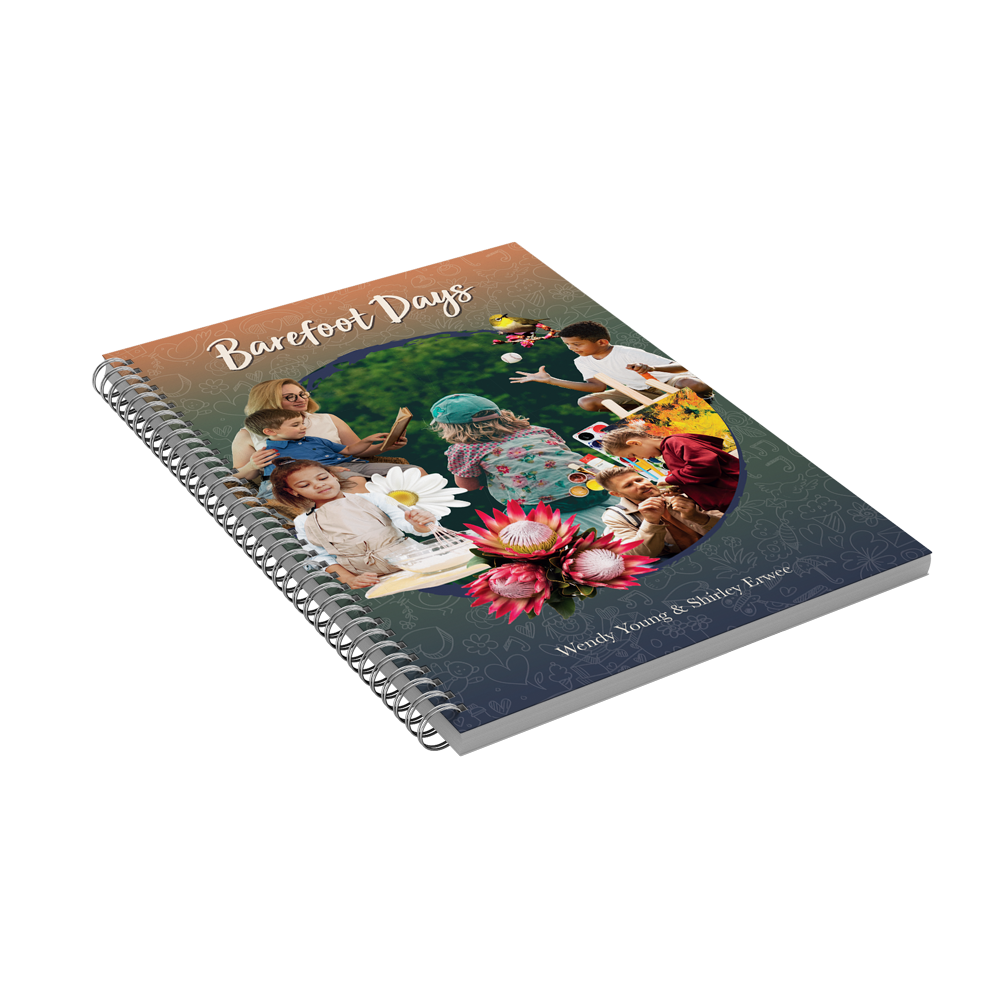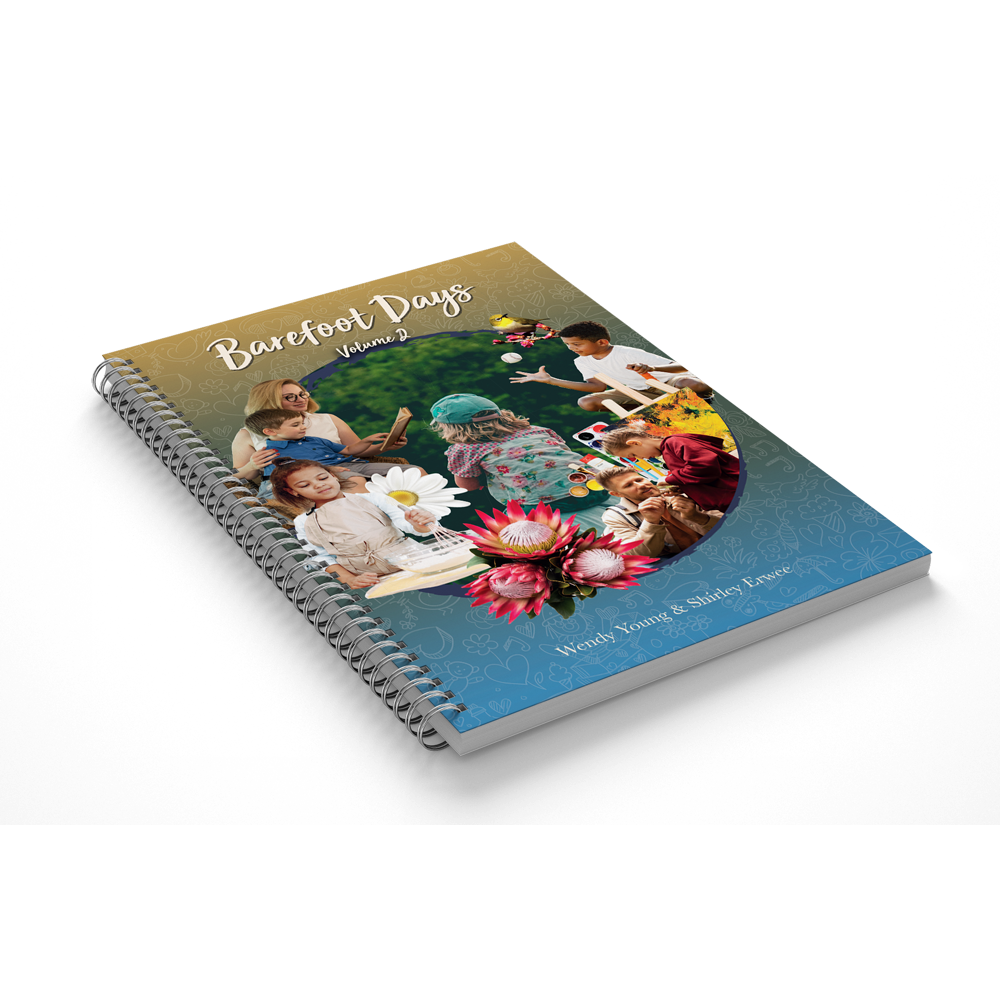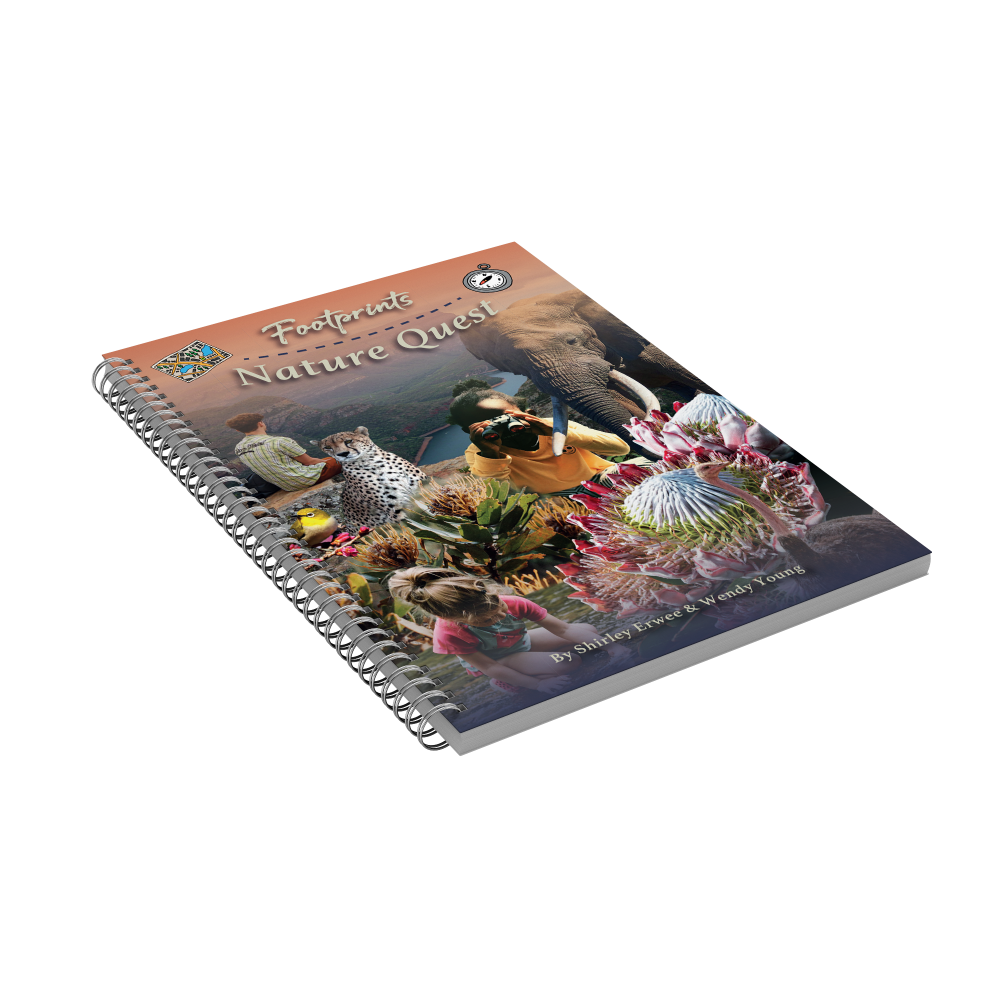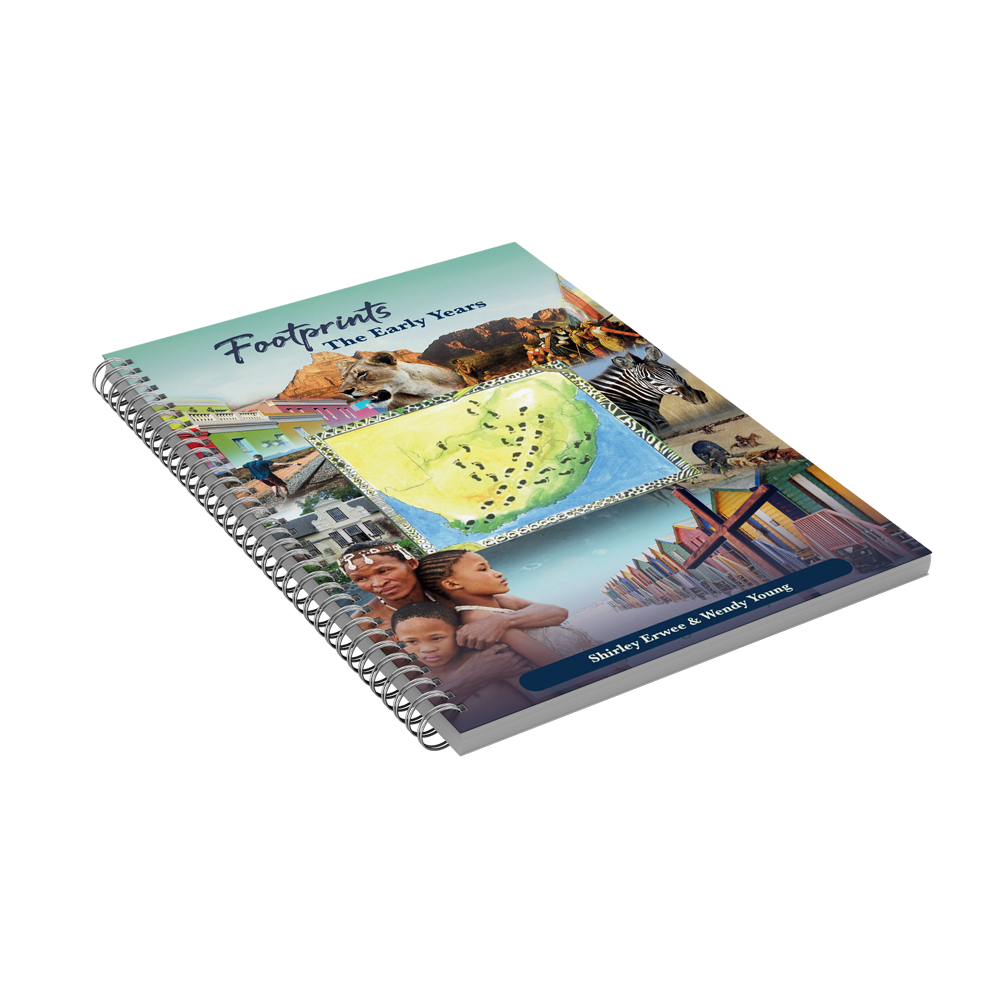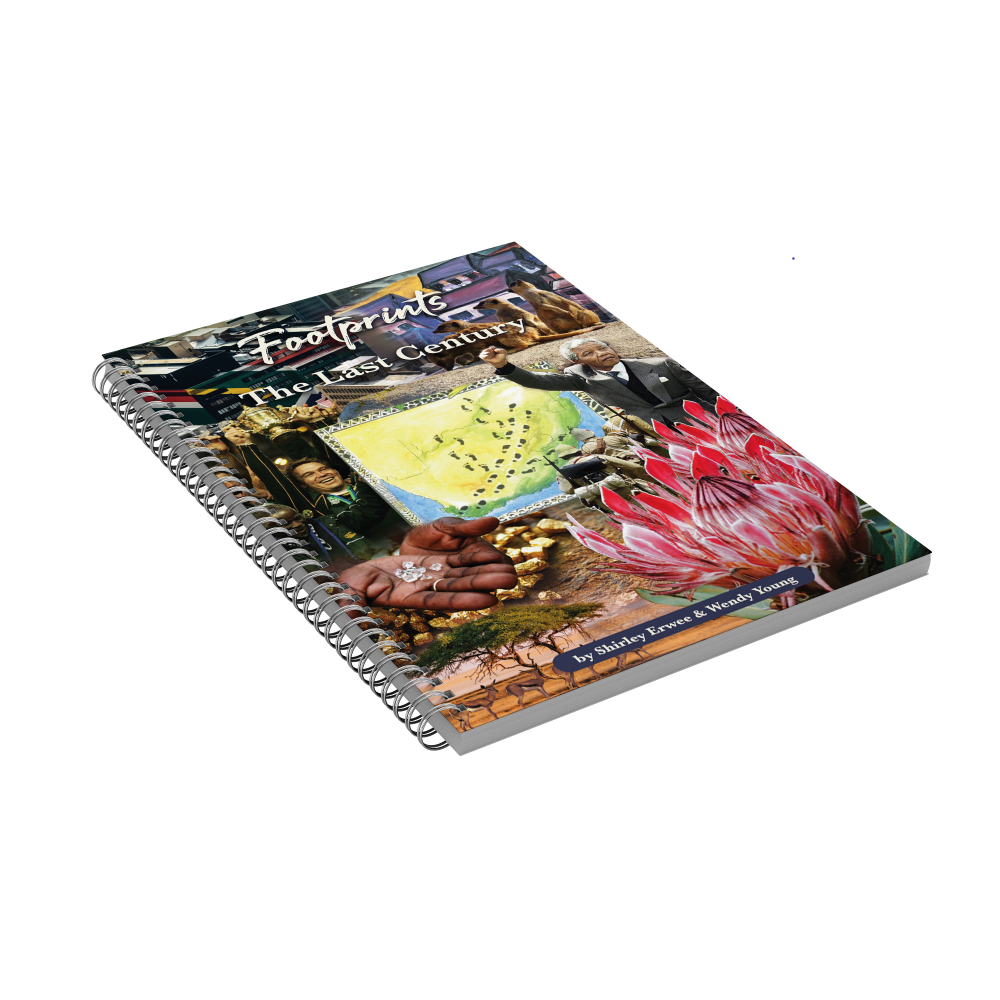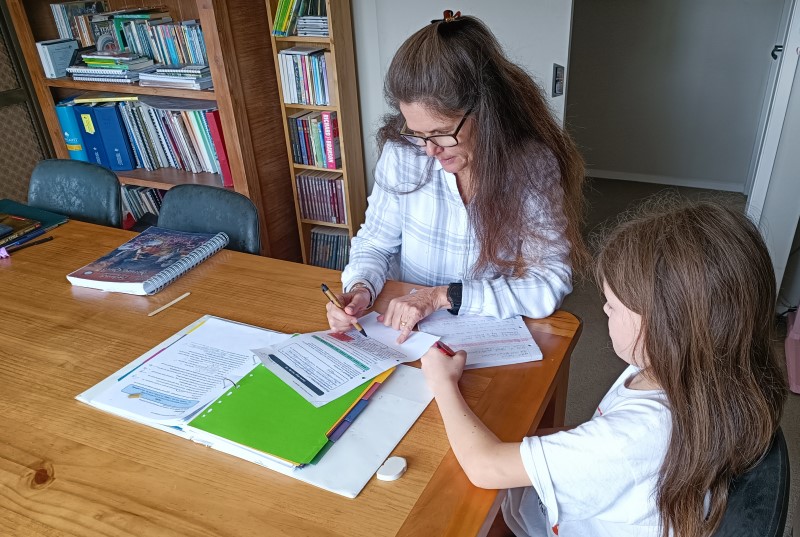
Discover how the Footprints and Voetspore programmes easily meet the requirements for Language skills as described by CAPS (Curriculum Assessment Policy Statement).
Home educating families are free to use any curricula or other learning resources of their choice. In press release issued on 11 March 2024, the Department of Basic Education stated: “The Department has no intention of taking away the freedom of curriculum choice from the parents.”
However, the law stipulated in the SA School Act in Section 51 states that:
the education likely to be received by the learner at home—
(i) will meet the minimum requirements of the curriculum at public schools; and
(ii) will be of a standard not inferior to the standard of education provided at public schools;
So how do you know if you are meeting the minimum requirements? What are they?
In this article, we will give you an easy-to-read summary of what is required for Home Language in the CAPS document and show you how our various Footprints programmes plus our optional extra Language Arts worksheets (English only) easily meet the CAPS requirements.
(CAPS is the acronym for Curriculum Assessment Policy Statement, which outlines the national curriculum for use in schools.)
As homeschooling parents, it is essential to break away from the mindset that the information prescribed by the state is all there is to learn, despite making sure your children “meet the minimum requirements”!
What does CAPS say about Language Arts?
The CAPS document on Home Language for the Intermediate Phase states:
“The Home Language level provides for language proficiency that reflects the basic interpersonal communication skills required in social situations and the cognitive academic skills essential for learning across the curriculum. Emphasis is placed on the teaching of the listening, speaking, reading and writing skills at this language level. This level also provides learners with a literary, aesthetic and imaginative ability that will provide them with the ability to recreate, imagine, and empower their understandings of the world they live in.“
“The Home Language curriculum is packaged according to the following skills:
1 Listening and Speaking
2 Reading and Viewing
3 Writing and Presenting
4 Language Structures and Conventions“
The first three list items above are covered by the Footprints, Voetspore and Nature Quest/Natuurskattejag programmes “across the curriculum” – listening to and reading literature, narrating, discussing, completing written assignments and presentations about the topics that are covered. In a Charlotte Mason-style education, these language skills are not pulled out as separate subjects, but instead are integrated into the learning of other topics and subjects, across the curriculum.
So, for example, as children listen to a story about Nelson Mandela, they are learning about history, but also listening, speaking and narrating and they may complete a written assignment in the form of a biography.
We offer optional extra, printable Notebooking pages with most of our programmes, to make it easy for families to complete written assignments.
The additional Language Arts programmes we offer in English to go along with Footprints – The Early Years include dictation, copywork and grammar activities which largely make up the fourth item on the list above, namely Language Structures and Conventions (also known as Grammar!)
For more detail about each of these four components of language learning, read on. Text in italics in yellow shaded blocks is taken from the CAPS document and the plain text is our comments about how Footprints meets these CAPS requirements.
1. Listening and Speaking
Listening and Speaking are central to learning in all subjects. Through effective Listening and Speaking, learners collect and synthesise information, construct knowledge, solve problems, and express ideas and opinions. Critical listening skills enable learners to recognise values and attitudes embedded in texts and to challenge biased and manipulative language.
These activities are a critical component which are built into all our Footprints literature-based programmes. Families listen to stories and information read aloud in the home. We encourage and give cues throughout the programmes for families to discuss what they read, to look for bias and think critically about information they receive.
2. Reading and Viewing
Well-developed Reading and Viewing skills are central to successful learning across the curriculum. Learners develop proficiency in Reading and Viewing a wide range of literary and non-literary texts, including visual texts. Learners recognise how genre and register reflect the purpose, audience and context of texts. Through classroom and independent reading, learners become critical and creative thinkers. Reading gives learners more exposure to their additional language. We know from research that children’s vocabulary development is heavily dependent on the amount of reading they do.
Besides fabulous literature and background reference material, Footprints also offers families exposure to other literary genres through websites and video material available on the course website. As we always say, you need to learn to read critically, to “read between the lines” and comprehend what someone is really conveying and read widely to make up your own mind about the facts of a story in history.
For example, as you study literature, history, art and poetry created by colonial artists and authors in our Footprints programmes, you will be encouraged to look out for their biases towards indigenous people, which were prevalent in times past. As a family you can discuss how vocabulary and terminology has changed, and how taboos and political correctness help to redress the wrongs of the past – or not! Our programmes will uncover political scandals and myths for you to discuss and debate. All these activities present opportunities for children to read critically, develop their reasoning and thinking skills, as practice expressing their ideas clearly.
CAPS outlines the following reading activities, most of which most families would naturally follow when reading literature together in a Charlotte Mason-style education. Each of our programme offers an ample selection of the best South African children’s literature for you and your children to read aloud together:
The reading process
The reading process consists of pre-reading, reading and post reading stages. The activities the learner will be engaged in can be summarised as follows:
Pre-reading:
- Activating prior knowledge
- Looking at the source, author, and publication date.
- Reading the first and last paragraphs of a section.
- Making predictions.
Reading:
- Pause occasionally to check your comprehension and to let the ideas sink in
- Compare the content to your predictions
- Use the context to work to work out the meaning of unknown words as much as is possible; where this is not possible, use a dictionary
- Visualise what you are reading
- Keep going even if you don’t understand a part here and there.
- Reread a section if you do not understand at all. Read confusing sections aloud, at a slower pace, or both.
- Ask someone to help you understand a difficult section
- Add reading marks and annotate key points
- Reflect on what you read
Post reading:
- If you will need to recall specific information, make a graphic organiser or outline of key ideas and a few supporting details
- Draw conclusions
- Write a summary to help you clarify and recall main ideas.
- Think about and write new questions you have on the topic
- Ask yourself if you accomplished your purpose?
- Understanding – confirm your understanding of the text
- Evaluate – bias, accuracy, quality of the text
- Extend your thinking – use ideas you saw in text
“I started using Little Footprints with my daughter who is turning 6 this year. I am a primary school teacher with a literature degree and I have always struggled with the difficulty of incorporating living, engaging thematic learning into disjointed seemingly arbitrary curriculums. Charlotte Mason principles have been a breath of fresh air to my soul. Your programme has given me the most liberating platform and foundation for applying this approach to the rest of her school career.”
~ Bronwen Willans
3. Writing and Presenting
Throughout our programmes, we require students to do research and written assignments or presentations to convey something they learned. These skills are developed across the curriculum. CAPS states the following:
Writing and Presenting
Writing is a powerful instrument of communication that allows learners to construct and communicate thoughts and ideas coherently. Frequent writing practice across a variety of contexts, tasks and subjects enables learners to communicate functionally and creatively. Writing which is appropriately scaffolded using writing frames, produces competent, versatile writers who will be able to use their skills to develop and present appropriate written, visual and multi-media texts for a variety of purposes.
Writing is important because it forces learners to think about grammar and spelling. This encourages learners to process the language, speeds up language acquisition and increases accuracy. Learners will learn to write a range of creative and informational texts, initially using writing frames as support and gradually learning to write particular text types independently. They will also employ the writing process to produce well organised, grammatically correct writing texts.
Process approach to writing
Writing and designing texts is a process which consists of the following stages:
- Pre-writing/planning
- Drafting
- Revision
- Editing/Proofreading
- Publishing/presenting
Learners need an opportunity to put this process into practice and they should:
- decide on the purpose and audience of a text to be written and/or designed;
- brainstorm ideas using, for example, mind maps, flow charts or lists;
- consult relevant sources, select relevant information and organise ideas;
- produce a first draft which takes into account purpose, audience, topic and text structure
- read drafts critically and get feedback from others (classmates or the teacher);
- edit and proofread the draft; and
- produce a neat, legible, edited final version.
There are ample opportunities to develop all these skills in our Footprints programmes. We have assignments such as diary entries, letters to a grandparent, creating a brochure about a topic, designing a poster conveying a message, writing newspaper reports, summarising, a day in the life of …, creating a visual (PowerPoint) presentation about a topic etc.
A child’s visual presentation project from Footprints Nature Quest
We are loving both Nature Quest and Footprints. I’m loving the integrated learning approach, as well as the story-based foundation. Just wanted to let you know. The kids were so excited about their own Notebooking pages and they are currently decorating their treasure chests.
~ Jessica Stanier
4. Language Structures and Conventions
When it comes to item 4, Language Structures and Conventions, our optional extra Language Arts programme does exactly what is required by the CAPS document and uses texts from the literature that children are reading to teach language concepts in context:
Learners will learn how Language Structures and Conventions are used, and will develop a shared language for talking about language (a ‘meta-language’), so that they can evaluate their own and other texts critically in terms of meaning, effectiveness and accuracy. They will also be able to use this knowledge to experiment with language to build meaning from word and sentence levels to whole texts, and to see how a text and its context are related. Through interacting with a variety of texts, learners extend their use of vocabulary and correctly apply their understanding of Language Structures and Conventions. It is expected that Language Structures and Conventions should be taught in context as other language skills are taught and developed. The teaching plans contain a list of Language Structures and Conventions (items) that should be covered in each grade. When selecting listening and reading texts for each two-week cycle, make sure that they contain some of the language items you want to cover. Create activities related to these texts that will enable learners to use these items, in context.
With Footprints, a delightful literature-based education, you will seamlessly integrate so much of the CAPS skills without tedious textbooks, boring exercises, and dull lessons. The optional Language Arts programme enriches all the reading, comprehension, vocabulary extension, spelling, copywork, grammar, and creative writing taken directly from the read aloud books. This means that all the language skills are relevant, in context, enjoyable, and meaningful. Footprints has done all the work for you the parent. All you need to do is read aloud to you children, enjoying the delightful stories, and then follow their parent guide and the LA programme, and you will more than meet what is required by CAPS.
~Nadene Esterhuizen, Ex-teacher, Homeschool Mom and Author of the Footprints Language Arts programme
View Sample Pages of Footprints Products
Take a look at how reading comprehension and writing assignment cues are scattered into the lesson material in these Sample pages of Footprints – The Early Years. The same approach is used in all our Footprints products.
There are sample pages from the Footprints Language Arts programmes shown with each product in our Shop. They illustrate how a short text from a Footprints story is used for copywork or dictation and then grammatical or stylistic concepts are highlighted so that children learn the ‘mechanics’ of language in context.
Beginners Language Arts
Advanced Language Arts
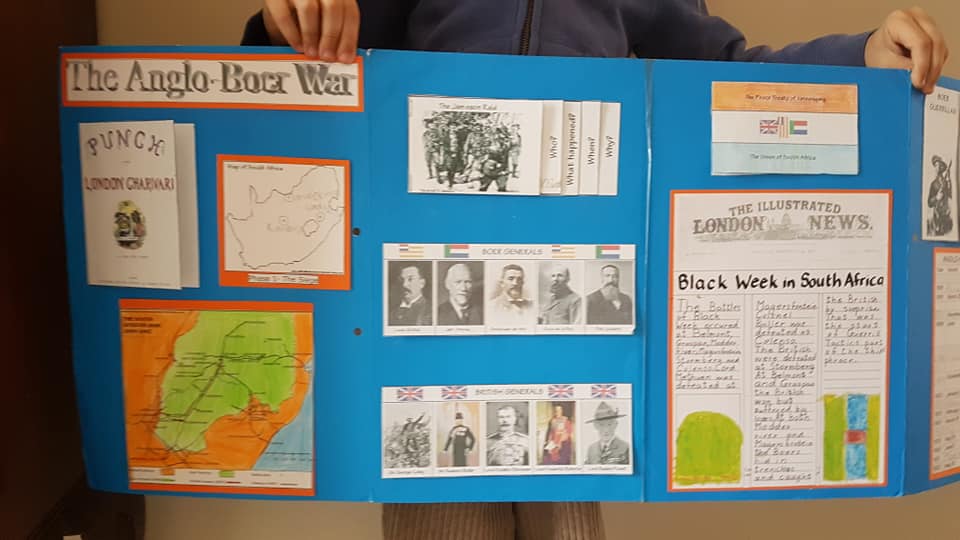
A South African history unit study or lapbook project about the Anglo-Boer War
Footprints’ Winning Formula
The CAPS documents states that: “This curriculum aims to ensure that children acquire and apply knowledge and skills in ways that are meaningful to their own lives. In this regard, the curriculum promotes knowledge in local contexts, while being sensitive to global imperatives.”
We know from our own adult children’s experiences and from the testimonies of the many, many families who have used our Footprints products, since 2003, that the story-driven approach to learning languages and learning about our country is a winning formula. To see how Footprints also meets and exceeds the CAPS recommendations for Social Sciences, read our article Footprints and CAPS – Astonishing Alignment!
Footprints programmes meet the requirements of:
- equipping learners, irrespective of their socio-economic background, race, gender, physical ability or intellectual ability, with the knowledge, skills and values necessary for self-fulfilment, and meaningful participation in society as citizens of a free country;
- providing access to higher education;
- facilitating the transition of learners from education institutions to the workplace
Besides that, our Footprints programmes offer families a delightful, meaningful and enjoyable way to learn about their country together, tools that equip parents to teach children their own faith and moral values and they give you the freedom to give each of your children the unique educational experience that they need to thrive.
You need never fear that you are “not doing enough”. With the combination of Footprints plus a loving parent, you have a recipe for success. (Just add Maths!)
Footprints + YOU = Success!
We chose to do the Footprints curriculum over two years….really allowing the things to take root and focus on deeper learning. It has been absolutely amazing and watching my son grow, deepen in knowledge and wisdom. It has absolutely blown my mind.
My dad, who was the biggest critic, (he is a retired principal) was absolutely blown away!
~ Annuska [surname withheld]
English Homeschool Curriculum Products
Homeschool Assessments, Reports and Compliance
Part 1 – Homeschool Assessments
Part 2 – Homeschool Reports
Part 3 – Should You Submit Homeschool Reports?

